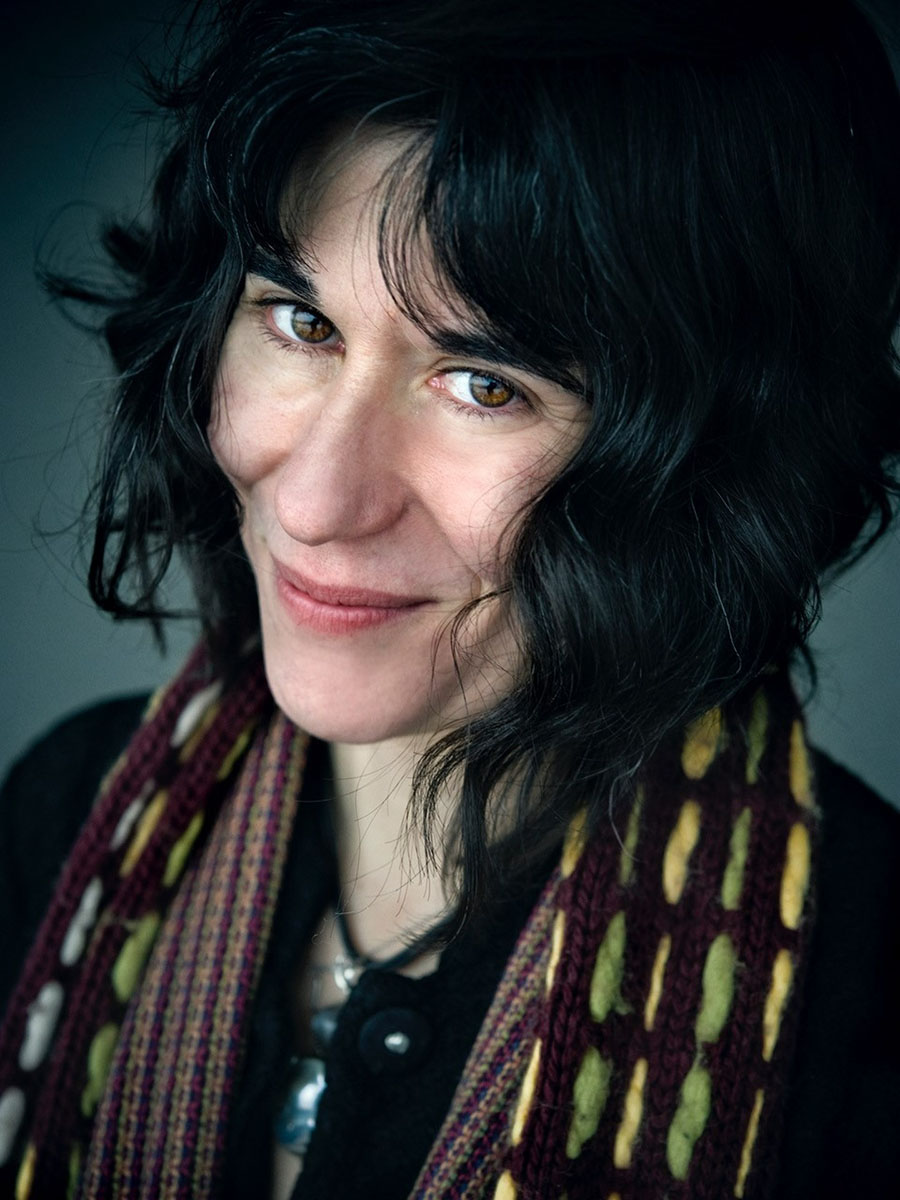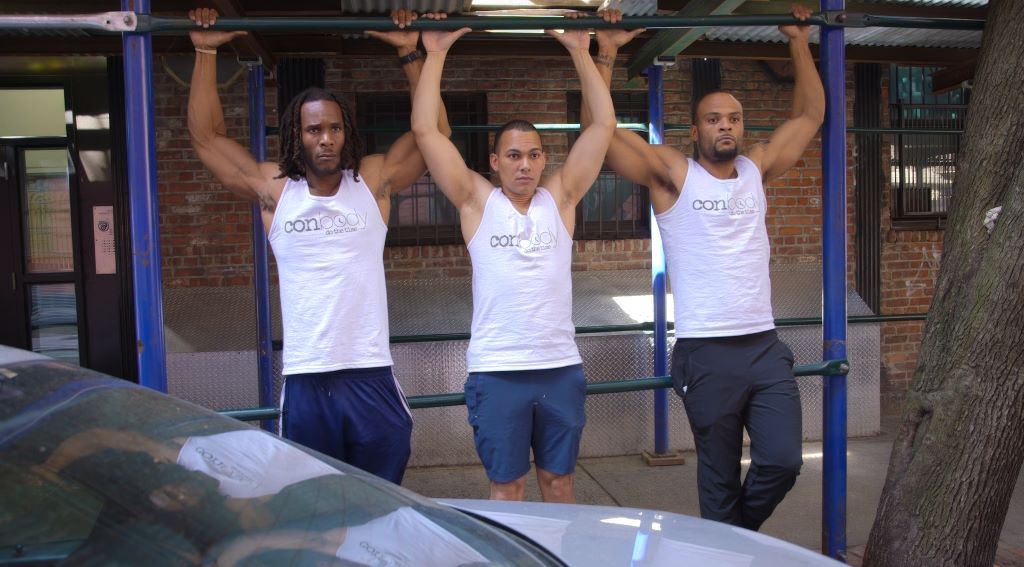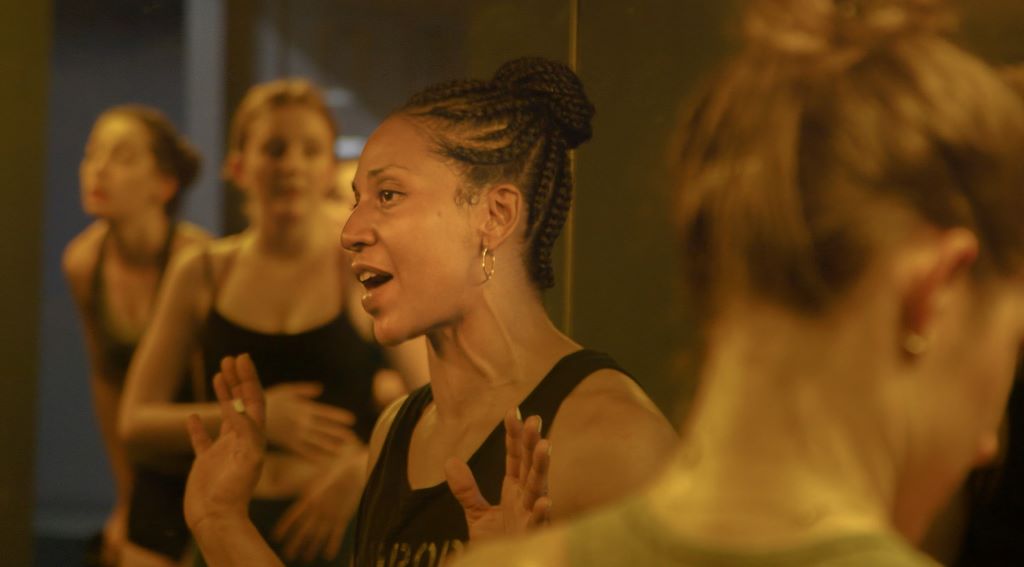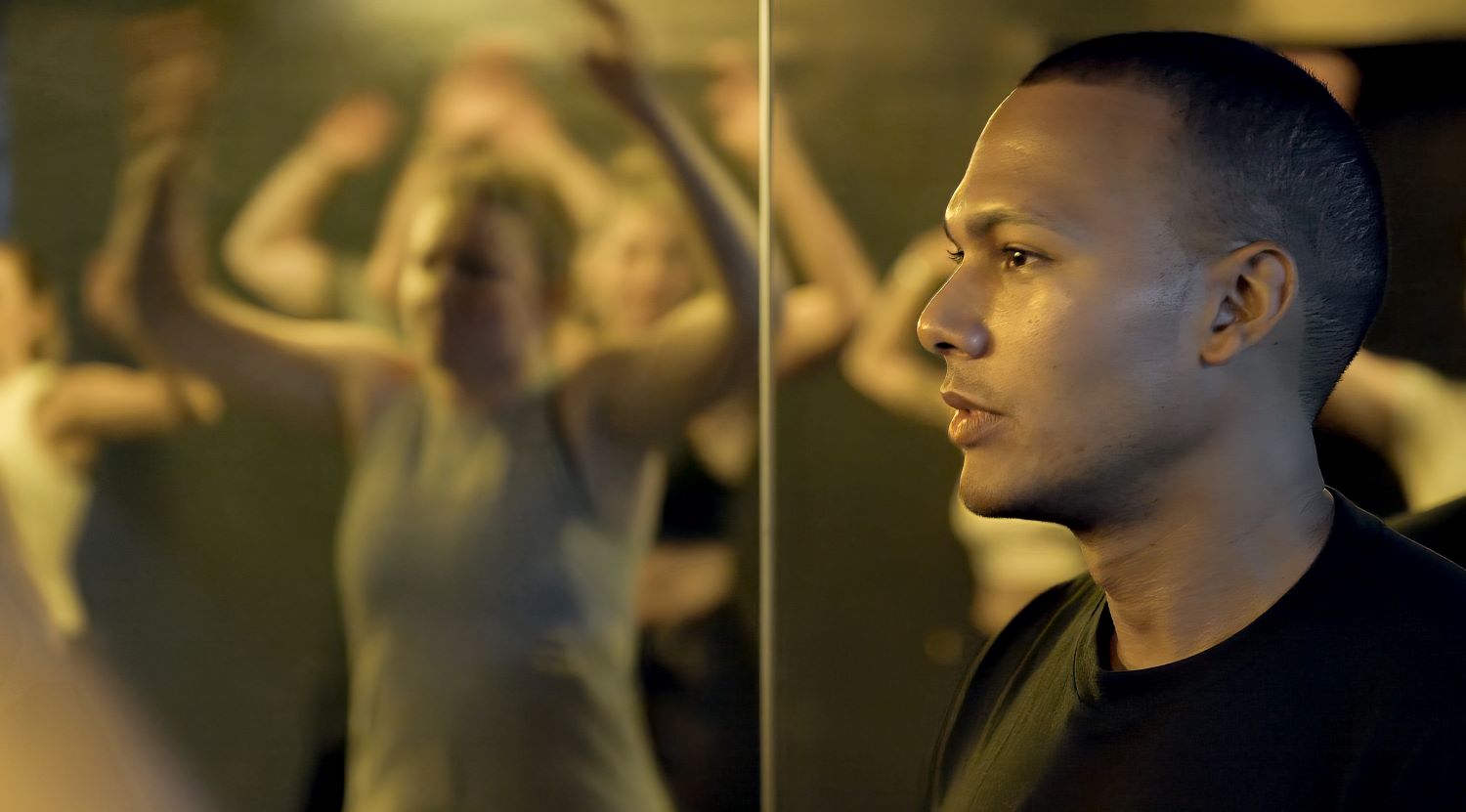“Scrappy survivors will always interest us because their survival’s not guaranteed,” says Conbody VS Everybody director Debra Granik. “They have to use their wits and their resources and their camaraderie. They’ve got to make those elements gel into a plan for how they’re going to get this life to work.”
Granik finds the scrappiest of survivors in her long-form documentary Conbody VS Everybody. The six-part doc, which premieres at this year’s Sundance Film Festival, follows New Yorker Coss Marte as he embarks on a fresh start following his release from prison. It’s his third time out and he’s determined to make it a charm. Granik, who previously won Sundance’s Grand Jury Prize for the gripping drama Winter’s Bone, follows Marte across an astonishing slice-of-life journey as he gives his all to building his own business, Conbody, from the ground up.
Conbody has a novel premise and a mean hook. Marte aims to get New Yorkers into shape by sharing the workout routine with which he trained in his cell. Using only his body weight and exercises suited to limited space, his classes teach participants to shape their bodies and mind. Conbody also has a mission: Marte wants the business to offer a stepping stone for other formerly incarcerated individuals as they return to society. Granik watches as he helps others avoid the vicious cycle into which he fell.
The Long Game

Granik, speaking with POV via Zoom ahead of Sundance, says that she’s drawn to the hunger of survivors like Marte. “I’m attracted to when they identify that hunger, start to activate, and want to do what they can for themselves and each other to see if they can get somewhere,” she notes. Conbody VS Everybody captures a true appetite to succeed. Starting in 2014 and following Marte over eight years, the doc sees him roll with many punches as his gym faces numerous ups and downs.
In a unique approach for the relatively new phenomenon of showcasing episodic works at festivals, Sundance will premiere not the first episode of Conbody VS Everybody, but rather episodes four and five. Granik explains that she hopes these chapters of the story, which feature considerable dramatic arcs after Marte spends the first episodes shaping his vision, will leave audiences with deeper questions about his situation. “Because we cannot show the whole story, we wanted to introduce the viewers to the idea that Coss builds a family and to give a taste that there are other key characters in the story,” explains Granik. “It’s also a section of the story with dynamic existential highs and lows. There’s positive growth and forging of camaraderie as well as painful setbacks and losses. We wanted the viewer to understand the intense ride of survival that the team is on.”
Recognising the Hunger
Granik explains that the seeds for the documentary began when she encountered Marte while researching a dramatic project. (Apparently she planned a film inspired by Snoop from The Wire.) She says she saw Marte do a presentation while he was undergoing stages of the Defy re-entry programme. Granik adds that was struck by the charismatic appetite for change with which Marte pitched Conbody. He does so throughout the documentary, never letting any bite reduce his hunger to succeed.
“He was presenting that day and he did something very intentional and important. He called out his dad in the room and said, ‘Part of me coming home and re-establishing my life and reconnecting with my family is to be able to talk about making amends with people that I’ve hurt,’” recalls Granik. “It appeared to me that he was going to use all the tools he had to re-enter society in a very open way, delineating to his parents and to the people in the room that he didn’t want to fail at this. Somewhere in the process, he made the early decision that being out about it was better than not.”
As Marte pitches Conbody to prospective investors, and to landlords with hopes of setting up shop, the practice of hiring formerly incarcerated people raises flags. Landlords are wary. Financiers are alternatively inspired and deterred. But Marte owns his past in order to provide a future. He’s open about his struggles and wants his desire to change, not his past actions, to define him. “That was really attractive, and I was coming off of a sad, pessimistic, and nihilistic impression of what re-entry was like in the revolving door that we have in our country,” says Granik. Marte’s comfort to have these conversations situates his plight and those of his colleagues amid a cycle of recidivism that risks repeating if people on parole don’t get the support they need.

Building a Family
Across the six episodes, Conbody builds a respectable enterprise. Marte faces hurdles, but he holds strong to keep his place in New York’s Lower East Side, initially establishing Conbody steps from the bodega where he sold drugs. Everyone who joins him has a story and a desire to start fresh. Each day at work is a reminder of how he got there. “Coss gave the framing, which is he said, ‘I can’t really do this alone. I need allies. I need a posse,’” explains Granik. “He loves family-building. That was a custom from the streets: you build meaningful, trustworthy relationships and, if you advance, you want the people around you to advance.” Marte commits himself to the business not only for his reform, but also to provide opportunities that didn’t exist for people of his generation growing up on the Lower East Side.
“I think it was overwhelming in that building a family also meant providing services that were beyond his scope,” adds Granik. The doc sees Marte offer his couch to trainers when he barely has a room of his own. He’s always the last person getting paid. “He knew people needed emergency-level money in their pocket when they came out of prison. But he knew he could only provide a very small portion of that. These were not full-time positions he could offer people. But then he had his couch from the leniency and benevolence of his mom.”
The doc sees Marte offer his space to trainers when he barely has a room of his own. He’s always the last person getting paid. “The difficult and rocky and ups and downs part is the reality of the level of raw need that individuals have when they come out of the U.S. prison system,” says Granik.
A Relative of Stray Dog?
Marte’s desire to raise up people who share his situation makes him a thematic relative of the titular star of Granik’s 2014 documentary Stray Dog. Like Marte, Stray Dog, a Vietnam War veteran who tours around on his motorbike to support fellow veterans with PTSD, uses his openness about his experience to give voice for the many people in similar situations. Both men, moreover, are products of decidedly American systems: the prison system and the military.
“These are two huge systems that historically affect the lives of American men,” observes Granik. “We’ve got these defining institutions of American existence and of course they’re going to issue veterans. When those systems inflict certain levels of treatment that’s hard to survive, the veterans will bond based on the fact that they do want to know what happened to them. They want to know why it happened, how to get beyond or around it, meaning the PTSD part of both systems.”
Conbody VS Everybody observes how Marte and company break their old habits. Sometimes this assumes a surreal quality, like in the fourth episode when Conbody has a pop-up gym in swanky Saks Fifth Avenue. The trainers can’t help but laugh like fish out of water as posh shoppers peer into the gym and scuttle bye. But Marte presses on, determined to make the business work for his team.
“Stray Dog and Coss are very brotherly individuals,” says Granik, connecting the men by their optimism and resilience. “They find the most profound meaning of their life feeling that their destiny and their well-being is inextricably linked to the lives of people who share their core experiences. You have to cultivate something so that you have a bedrock to walk on, so that you and other folks can have a Chapter Two.”
Ties that Bind
But as Marte grows his network, Granik observes a peculiar bind of the enterprise. Guidelines prohibit people on parole from fraternizing, so getting on the level technically means side-stepping the conditions. Many Conbody employees travel a fair distance to get to work, in some cases crossing state lines from Jersey, and there’s an element of risk involved. However, Granik says she saw Marte double as both an employer and a mentor to ensure that trainers stayed on track with parole, advising colleagues to check with their parole officers before commuting. He constantly advises his peers that he’s their 9-1-1 in a bind. (New York has since changed these laws.)

Granik says that cases in which characters draw from Marte’s desire for transparency exemplify how the system works when good parole officers assist their cases with their reform. “To make parole feel like it’s on someone’s side, that it’s not all against them the minute they get out, a parole officer who grants a person permission to go to a wedding or a christening or a graduation, it goes such a far distance to tell that person who’s on parole that the state of New York does want them to start experiencing positive things in your life,” says Granik. “It says, ‘We actually do want to support you in rebuilding your life’ and the no‘s make you feel much lesser.”
The Political Pulse
At the same time, the longitudinal nature of Conbody VS Everybody’s production means that Granik observed the changing attitudes towards reform in America. The film generally keeps Trump out of the frame, refreshingly so, but archival footage offers snippets of Barack Obama visiting a prison. There’s a taste of America’s pledge to reform that was never fully realized.
“It looked so definitive to me that there was a sea change and, in fact, there was,” notes Granik. “However, the positive way that our country discussed it got decimated by the change of the regime. As we shifted to the right, it was terrifying to see the revival of the notions of jacking up the numbers and using crime as a misdirected statistic, or abusing it, or giving false information about it as a possible raison d’être to bring our incarceration rates back up.”
Conbody VS Everybody reflects the changing political tides in a storyline with Marte’s brother Chris, who decides to run for local politics. Chris harnesses the appetite for change and becomes an institutional voice for Conbody and its network of reformers. This storyline offers a compelling dramatic hook in the episodes screening at Sundance.
From Feature to Long-Form
Chris’s presence in Conbody VS Everybody illustrates one facet in which the documentary evolved as the longitudinal aspect shifted the production from a feature to an episodic work. Granik credits the vision of late executive producer Diane Weyermann, as well as producer Anne Rossellini and editor/executive producer Victoria Stewart, for seeing it through.
“Diane wanted to think about a format that we all loved and she didn’t get to go far enough with it, but she was instigating it. Steve James was also a great beneficiary of this, which was the multi-part documentary instead of a series,” explains Granik. “The distinction for her was that the series didn’t have to have the conventionality or tropes that have been characteristic of doc series thus far.”
Instead of falling into the trap of salacious true crime serials, which exploded in popularity during the course of Conbody’s production, Granik says that Weyermann advised her to look beyond staircases, cults, and serial killers of the form and to take a Dickensian approach.
“She saw that you could have minor-note moments to conclude the chapters of a multi-part documentary. It doesn’t have to be cliffhangers that are tared up,” says Granik. “She said, ‘Think of a singular story that has chapters because it’s taking place over time. She loved longitudinal films. I think that’s why she liked Steve’s work a lot.”
As Granik’s camera immerses itself in Conbody’s world, it captures a genuine sense of the environment, the stakes, and the very real desire all these characters have in making sure that their next shot—possibly their last shot—finally hits the target. The fine eye for Coss’s social situation is equal parts The Wire and Oliver Twist, with the Dickensian element crystallizing when Granik notes the inspiration. “Survival is a big story,” says Granik. “Survival’s a really meaty story, especially in the U.S. where we are born with a feeling that we’re all supposed to be able to eek it out.”













